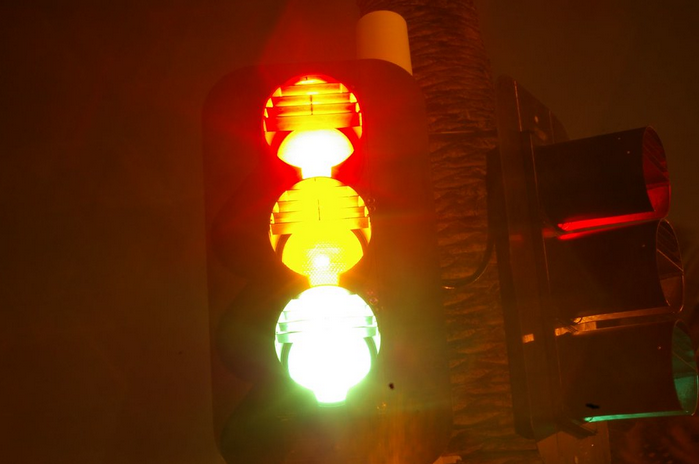Being in a constant “fight or flight” state is often the result of post-traumatic stress disorder, which has a significant physical impact on our bodies and our brains.
For the many of us who have recently survived a toxic relationship, one of the aftereffects is being in a constant state of “hypervigilance.” We have unfortunately trained ourselves on how to survive a monster, and we take these instincts out into the world with us.
In a live interview, Washington security expert and private investigator, Greg Glassock, owner of Olympic Tactical in Washington state, shared that paying attention to those “Spidey-sense” signals is a powerful way to protect ourselves.
He then took us deeper into a process he teaches both civilians and police officers called “situational awareness.” Here’s Greg:
One of the things we just look at is a color code: white, yellow, orange, and red.
White is labeled as alert and aware. We tell a police officer, security, anybody else, the only time you should be in conditioned white is when you’re in a place that’s absolutely safe.
If I’m inside my house, I’m on the couch, reading, I can let the rest of the world go. I can read my book and focus on my book and not pay attention if I’m in the shower or asleep. Those are places where it’s totally okay to be in condition white where we can really relax.
Condition Yellow is where we want people to be almost all the time when they’re outside. Condition yellow is alert and aware, but not afraid.
So my head is up. I’m looking around and listening, smelling and feeling, and paying attention to the noises around. Was it noisy and it just got quiet or was it quiet? Just got noisy? Do I get the tingles in my neck?
In yellow, I’m not stressed out yet, I’m just being aware of my surroundings. That’s where we want to live.
Condition Orange is an alert.
For example, I hear a weird noise, like a truck rumbling down an empty road, or I see this guy in the street that’s walking toward me and just made eye contact and now he’s approaching me directly.
I’m not necessarily afraid, but I’ve noticed something odd, something different, something that could be a problem. And then I make a decision about what to do. I can get out of the street because there’s a truck. I can stand up taller and look the guy in the eye and look tough. And I can say, “Don’t come talk to me,” or do whatever I’m going to do to avoid that situation.
That’s condition Orange. What we want people to do is be cycling between yellow and orange, yellow and orange, yellow and orange all the time.
If you’re driving, you’re doing that. You’re seeing somebody speeding up on your left-hand side. You’re aware of that. You may move over it just to avoid the situation that’s yellow and orange.
Red condition is I’m going into emergency. My heart rate is going; my adrenaline’s kicking in. I got chemicals flashing. I’m in the fight. That’s when something bad has happened.
This can be very valuable. It gives us that energy to fight or to run to escape. But we can’t stay there very well because of the physiological nature of all that adrenaline.
So we’ve got White, Yellow, Orange and Red. We want to be in yellow and orange when we’re outside in the world. We reserve white for our really true safe spaces.
Just being aware of that and being conscious of that out in the world can give you some protection.
As I told Greg during our interview, I like how simple his method of teaching situational awareness is by using a color code, because for me (and for so many in this community), it is often hard to check in with our feelings. Putting a visual color might make it easier to articulate what stage we’re at.
How do I feel RIGHT NOW? And do I need to step it up, or calm it down?
(Note: This snippet is taken from our longer live interview, “Surveillance, Stalking, Survival, and How to Properly Use Information to Strengthen Your Court Case” with security expert and private investigator, Greg Glassock, owner of Olympic Tactical)





